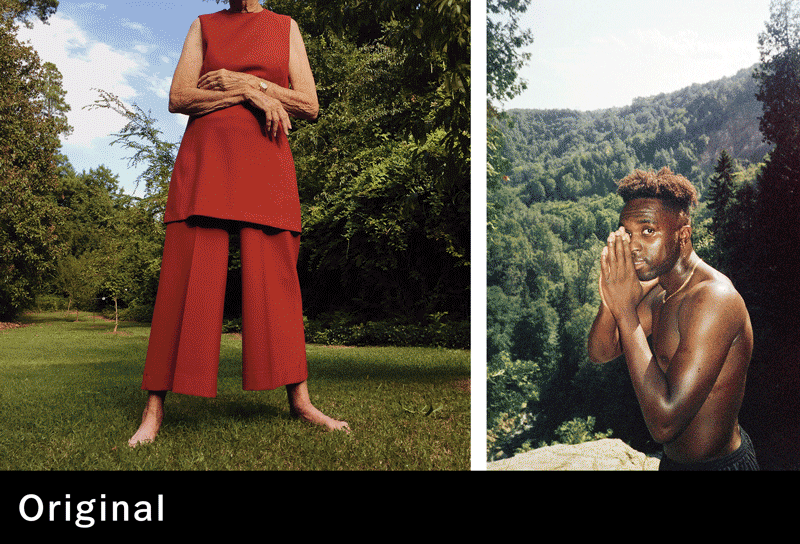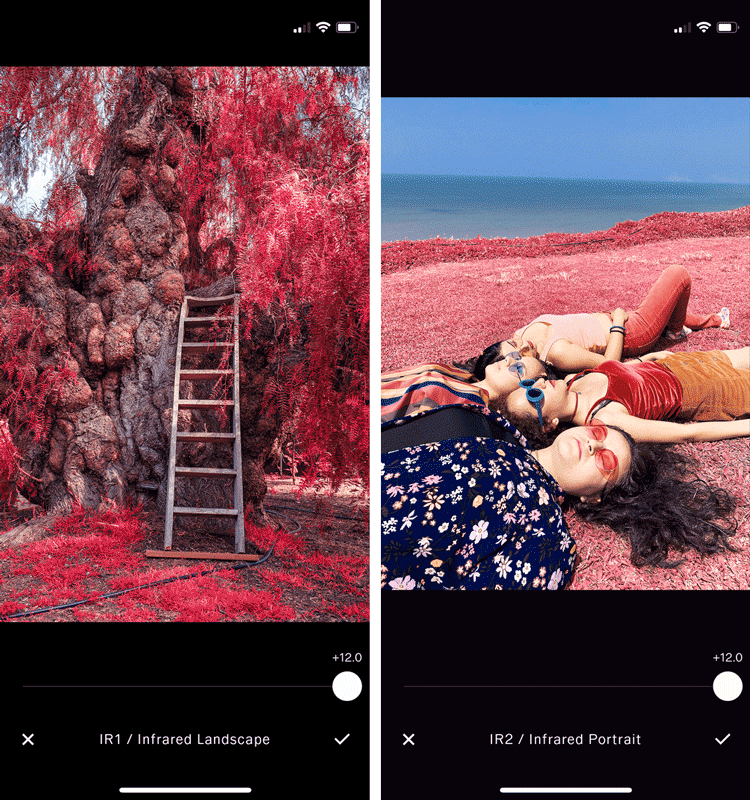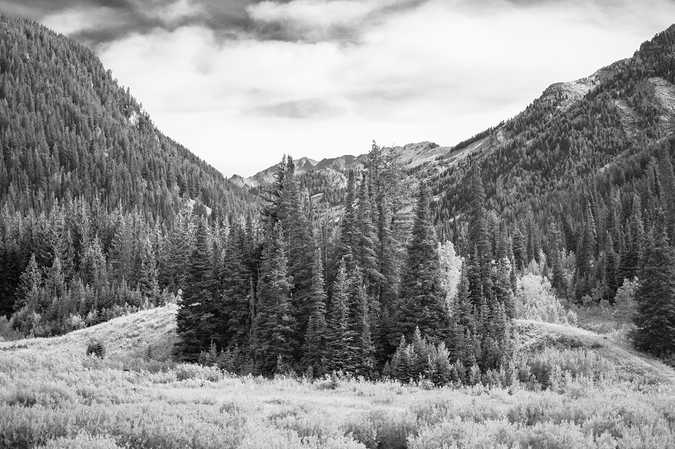VSCO Labs Infrared
 VSCO Infrared filters. Image by Carter Moore.
VSCO Infrared filters. Image by Carter Moore.
Introduction
At VSCO, we’re always working on new ideas for creative expression. Today we want to share something we’ve been working on recently that we’re excited to release soon: simulated infrared filters.
With its bright pinks, deep magentas, crimson reds, and other-worldly coloring, the look of infrared images is stunning, and anything but normal. But what is infrared photography really?
What is Infrared Photography?
Infrared, or IR, refers to light that is beyond the spectrum of electromagnetic radiation that we can see. We can however feel it as heat, and the warmer something is, the more infrared radiation it emits. For this reason, infrared has many interesting uses in science, astronomy, archeology, forensics, medicine, military surveillance, and many more.
Color infrared film was originally developed by Kodak for military surveillance use in the 1940s to detect camouflaged enemy forces on the ground. Since plants full of chlorophyll emit far more infrared light than camouflaged military vehicles, it made once hidden enemies easy to spot. The film worked by converting invisible infrared light into a pink or red color that was visible in an image, allowing this invisible spectrum to be seen. The results are bubble-gum pink forests and crimson red plants layered into an otherwise typical-looking landscape.
Infrared film was later released as a consumer product in the 1960s where it found fertile soil in the emerging psychedelic movement. A few iconic album covers from Jimmy Hendrix, Frank Zappa, and Donovan famously used infrared film to create their psychedelic colors.
Perhaps the most famous use of infrared photography is Richard Mosse’s documentation of the conflict in the Democratic Republic of Congo. Seeking to show the devastation of a civil war that is invisible to most of the world, he used recently discontinued Aerochrome film to create arresting images of war in pink jungles for his book “Infra” in 2012, and later with video film. (More here and here)
Nowadays, color infrared film is discontinued, but infrared photography is very much alive. By removing the infrared blocking filter in digital cameras, modern photographers are still creating beautiful, other-worldly infrared images.
How the New Filters Work
This, however, brings up the question: “If my camera blocks infrared light, how will VSCO’s IR filters create this look?” The answer is that they are an approximation of the most common visual features of real infrared photos without actually having access to infrared information. Greens and yellows are turned to pink and red, blue skies are darkened, and brightness is especially influenced by the red channel.
 Here you can see how the colors are changed in 3D space in the IR1 filter. Specifically, see how the greens are all being pulled to red.
Here you can see how the colors are changed in 3D space in the IR1 filter. Specifically, see how the greens are all being pulled to red.
The first filter is built for landscape images to ensure that plants whose color so often spills past green into yellow still turn to red and pink with the filter. However, people may turn odd colors in some situations with this look, and for that reason, we’ve created a second filter that is similar to the first but with more consideration for skin tones remaining natural colors. While real infrared photography can render people in unnatural colors at times, the look of bubblegum pink plants behind a portrait is so interesting (such as those by Richard Mosse), we made this alternate version to enable this expression.
 Note in both images how the landscape version affects the skin but the portrait version does not. Images by Killivvn and Nikki Recicki
Note in both images how the landscape version affects the skin but the portrait version does not. Images by Killivvn and Nikki Recicki
 Note how the portrait version doesn’t turn all the grass red but the landscape version does. Image by Joel Flory
Note how the portrait version doesn’t turn all the grass red but the landscape version does. Image by Joel Flory
With both of these filters, the strength slider presented an interesting challenge during development. Halfway between green plants and pink plants is an unattractive dull orange that is neither natural nor infrared. We needed something else to do with that slider.
 Dull orange color between green and magenta. Image by Zach Hodges.
Dull orange color between green and magenta. Image by Zach Hodges.
During our research, we had noticed that many infrared images feature either red plants or pink plants, and we learned that this was due to color filters that photographers place over their lens to change the infrared effect. This was the perfect solution to our problem, so we designed the strength slider to move between pink greens and red greens to capture the full look of infrared photography.
 IR1 & IR2 color changes with slider. Images by Zach Hodges & Lafir Mager.
IR1 & IR2 color changes with slider. Images by Zach Hodges & Lafir Mager.
Lastly, we created a black and white infrared look. We haven’t discussed B&W infrared here, but it’s even older than color infrared and renders plants and trees into a ghostly white while darkening skies for tremendously dramatic landscape images. The strength slider here adjusts the brightness of the infrared look on plants.
 IR3 changes with slider. Image by Victoria Hills.
IR3 changes with slider. Image by Victoria Hills.
Try It Early
In anticipation of this launch, we would like to extend an offer to our community to try these presets out early. In order to do this, you’ll need to send us your images using THIS FORM, we will apply the infrared presets and email these back to you on June 28th with the presets applied. Please include your first and last name in the file description so we know who to email the edited images back to. E.g. liam.hollingsworth-1.jpeg, liam.hollingsworth-2.jpeg
You can then choose to share these images the same day you receive them back from us.
If you decide you want to share the images on VSCO, Instagram, or other social channels, use #vscoinfrared
We also invite you to come and discuss the new infrared presets, or any VSCO feature or topic in our official VSCO Discord channel: https://discord.gg/sNGxcsHxUy
We are excited to see your images with these effects applied and we can’t wait to launch these filters alongside you!
Sample Images
 Image by Zach Hodges
Image by Zach Hodges
 Image by Apricot Berlin
Image by Apricot Berlin
 Image by Kyle Hale
Image by Kyle Hale
 Image by Kyle Hale
Image by Kyle Hale
 Image by Kyle Hale
Image by Kyle Hale
 Image by Christina Rouse
Image by Christina Rouse
 Image by Dolly & Fife
Image by Dolly & Fife
 Image by Zach hodges
Image by Zach hodges
 Image by Earlington
Image by Earlington
 Image by Kyle Hale
Image by Kyle Hale
 Image by Kyle Hale
Image by Kyle Hale
 Image by Kyle Hale
Image by Kyle Hale
 Image by Zach Hodges
Image by Zach Hodges
 Image by Kyle Hale
Image by Kyle Hale
 Image by Kyle Hale
Image by Kyle Hale
 Image by Kyle Hale
Image by Kyle Hale
 Image by Kyle Hale
Image by Kyle Hale
 Image by Kyle Hale
Image by Kyle Hale
 Image by Kyle Hale
Image by Kyle Hale
 Image by Kyle Hale
Image by Kyle Hale
 Image by Killivvn
Image by Killivvn
 Image by Lafir Mager
Image by Lafir Mager
 Image by Logan Haven
Image by Logan Haven
 Image by manmeetsstyle
Image by manmeetsstyle
 Image by Nikki Recicki
Image by Nikki Recicki

